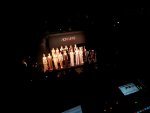Re: X32 v2 RTA
Thanks for the link, Mike, will look.
I'll try to power S16 from the same power strip as X32 next time, running long 3-prong extension cord along CAT5 snake. This in theory should give me a needed solid conductor between X32 and S16 metal chassis (a ground wire in extension cord), thus draining all possible static charges between them. We'll see.
That discussion has continued for some time on the LAB forum:
behringer x32 cracking and popping with 2x S16 connected?
Thanks for the link, Mike, will look.
I'll try to power S16 from the same power strip as X32 next time, running long 3-prong extension cord along CAT5 snake. This in theory should give me a needed solid conductor between X32 and S16 metal chassis (a ground wire in extension cord), thus draining all possible static charges between them. We'll see.

